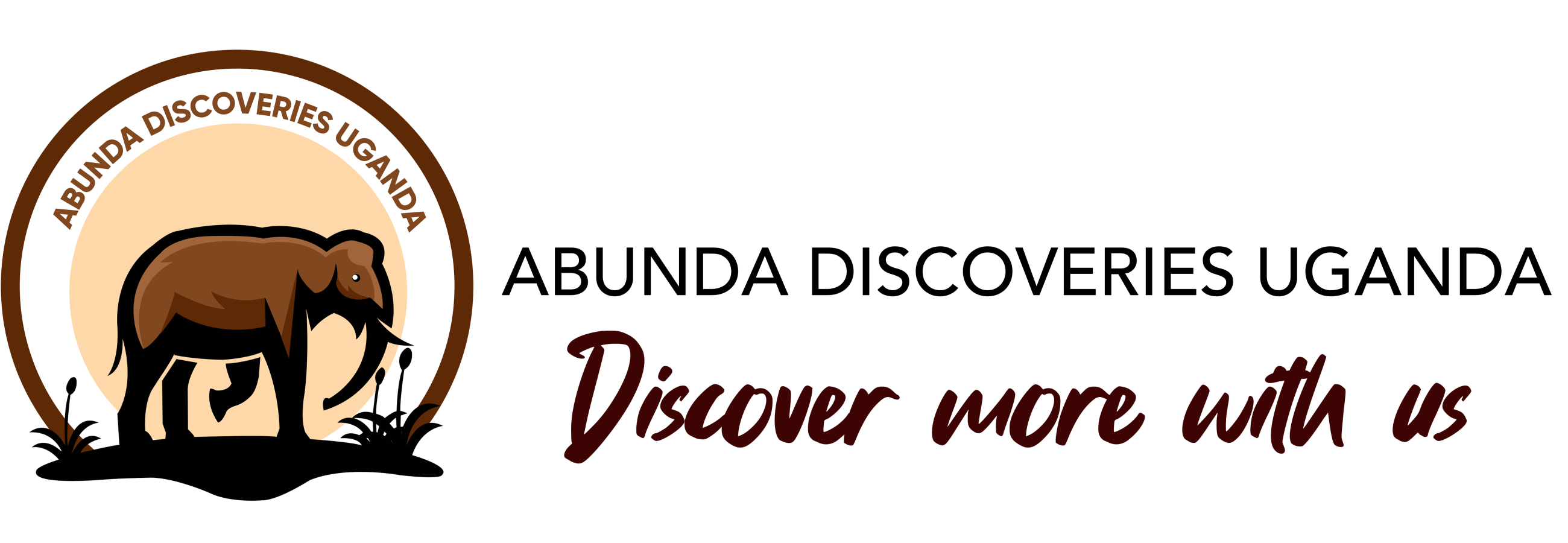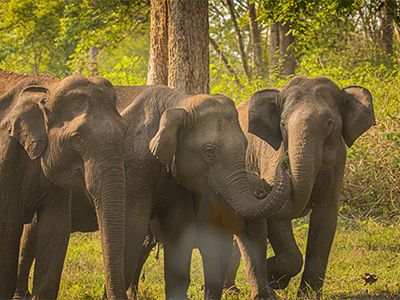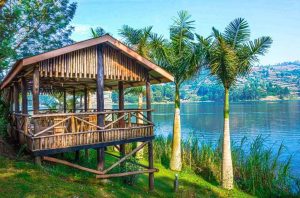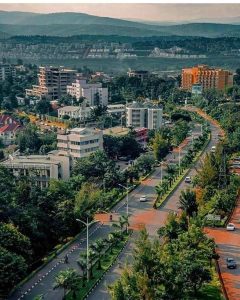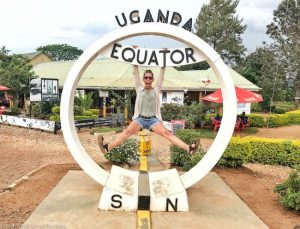Katonga Wildlife Reserve is one of Uganda’s lesser-known but ecologically rich conservation areas. It offers travelers an opportunity to explore diverse habitats, rare wildlife, and unique bird species away from the busier safari destinations. Located in western Uganda, this reserve protects a vital corridor for migratory animals and supports a wide range of biodiversity.
What is Katonga Wildlife Reserve?
The Wildlife Reserve is a protected area in western Uganda, established primarily to conserve the rich biodiversity along the Katonga River. It covers approximately 211 square kilometers and features seasonal and permanent wetlands, woodlands, and grasslands. Unlike larger savannah parks, Katonga provides a more intimate safari experience, with an emphasis on walking safaris, birdwatching, and guided boat rides.
The reserve is especially significant as it forms part of an important wildlife corridor connecting habitats in Uganda and neighboring regions. It also serves as a sanctuary for species that are rare or localized, making it a unique destination for eco-tourism.
Where is Katonga Wildlife Reserve located?
Katonga Wildlife Reserve is located in western Uganda, between the districts of Kamwenge and Kyenjojo. It lies approximately 200 kilometers from Kampala, the capital city, making it accessible by road within 4 to 5 hours of travel. The reserve is named after the Katonga River, which flows through it and sustains its wetlands and floodplains.
Its location makes it a convenient addition to a western Uganda safari circuit, combining easily with visits to Kibale National Park, Queen Elizabeth National Park, or Lake Mburo National Park.
What is the history of Katonga Wildlife Reserve?
The Wildlife Reserve was gazetted in 1998 under the management of the Uganda Wildlife Authority (UWA). Before its designation as a reserve, the area served as an important migration corridor for large mammals moving between Uganda and Tanzania.
The reserve’s history is tied to conservation efforts aimed at protecting wetlands and floodplains critical for biodiversity. Its establishment ensured that migratory routes and habitats for rare species such as the sitatunga antelope remained preserved. Over time, Katonga has grown into an ecotourism destination, attracting researchers, birdwatchers, and travelers seeking unique wildlife experiences.
What wildlife species can be found in Katonga Wildlife Reserve?
Katonga Wildlife Reserve hosts a variety of wildlife species, though its animal density is lower compared to larger savannah parks. Visitors can encounter hippos, elephants, bushbucks, waterbucks, reedbucks, and duikers. The reserve is particularly known for the sitatunga antelope, a swamp-dwelling species rarely seen in other parts of Uganda.
Primates are also present, including black-and-white colobus monkeys, olive baboons, and vervet monkeys. Small carnivores such as genets and mongooses inhabit the reserve, while reptiles like Nile monitors and snakes thrive along the riverbanks.
Are there unique animals in Katonga Wildlife Reserve?
The Wildlife Reserve is home to the sitatunga antelope, which is considered one of its flagship species. This antelope has adapted to swampy habitats with elongated hooves that allow it to walk on floating vegetation. Because of this specialization, sitatungas are rarely seen in other wildlife areas, making Katonga one of the best places to observe them.
Other unique species include otters in the wetlands and rare bird species such as the Papyrus gonolek. These animals highlight Katonga’s ecological uniqueness and its role in conserving wetland-dependent species.
What bird species can be seen in Katonga Wildlife Reserve?
The Wildlife Reserve is a prime birdwatching destination with more than 150 bird species recorded. The wetlands attract water birds such as African fish eagles, kingfishers, papyrus gonoleks, shoebill storks, and herons. Woodland and savannah areas support species like hornbills, turacos, and sunbirds.
The variety of habitats makes Katonga ideal for both experienced birdwatchers and beginners. Migratory species are also observed at different times of the year, adding to the reserve’s ornithological richness.
What habitats and ecosystems are found in Katonga Wildlife Reserve?
Katonga Wildlife Reserve encompasses diverse ecosystems. The wetlands and floodplains along the Katonga River dominate the reserve and provide crucial habitats for sitatungas, hippos, and aquatic birdlife. Surrounding these wetlands are savannah grasslands, which support grazing antelopes, elephants, and buffalo.
The reserve also includes patches of riverine woodland and acacia-dominated areas, which provide cover and food for primates and smaller mammals. This mosaic of ecosystems makes Katonga an important conservation area that supports high biodiversity relative to its size.
How large is Katonga Wildlife Reserve?
The Wildlife Reserve covers 211 square kilometers, making it smaller than Uganda’s major national parks like Queen Elizabeth or Murchison Falls. However, its size contributes to its charm, as visitors can explore its habitats on foot or by canoe, creating a more personal and less crowded wildlife experience.
Despite its smaller area, Katonga plays a vital role in preserving wetland ecosystems and migratory corridors, ensuring ecological balance across western Uganda.
What activities can visitors do in Katonga Wildlife Reserve?
Katonga Wildlife Reserve offers a range of activities centered on eco-tourism and low-impact exploration. These include:
- Guided nature walks through savannah and wetland areas.
- Canoe rides on the Katonga River for close-up views of hippos, birds, and sitatungas.
- Birdwatching excursions for both water and forest birds.
- Primate tracking, particularly for colobus monkeys and vervet monkeys.
- Cultural encounters with nearby communities.
Unlike larger safari parks where game drives dominate, Katonga emphasizes intimate and sustainable wildlife experiences.
Can visitors go on guided nature walks in Katonga Wildlife Reserve?
Yes, guided nature walks are a highlight of visiting The Wildlife Reserve. Trained Uganda Wildlife Authority rangers lead these walks, allowing visitors to explore wetlands, savannahs, and forest patches on foot.
These walks provide opportunities to observe smaller mammals, primates, and birdlife at close range, as well as learn about plant species and ecosystems. Walking safaris are safe and suitable for visitors of all ages, provided they are accompanied by guides.
Are boat rides available in Katonga Wildlife Reserve?
Yes, canoe rides and boat trips are available on the Katonga River. These water-based excursions allow visitors to see hippos, aquatic birds, and sitatungas that thrive in swampy habitats.
Boat rides offer a unique perspective of the reserve, especially during early mornings and late afternoons when wildlife is most active along the riverbanks. This activity complements nature walks and enhances the overall safari experience.
Is Katonga Wildlife Reserve good for primate tracking?
The Wildlife Reserve supports several primate species, making it suitable for primate tracking. Visitors can see black-and-white colobus monkeys, vervet monkeys, red-tailed monkeys, and olive baboons during guided walks.
While Katonga does not host chimpanzees or gorillas like Kibale or Bwindi, it provides excellent opportunities to study smaller primates in their natural habitats, making it appealing to researchers and wildlife enthusiasts.
When is the best time to visit Katonga Wildlife Reserve?
The best time to visit The Wildlife Reserve is during the dry seasons from December to February and June to September. During these months, trails are easier to navigate, and wildlife congregates near water sources, making sightings more predictable.
The wet seasons (March to May and October to November) transform the reserve into lush green landscapes, which are attractive to birdwatchers due to the presence of migratory birds. However, some areas may be harder to access because of flooding.
How can you get to Katonga Wildlife Reserve?
Travelers can reach Katonga Wildlife Reserve by road from Kampala, a journey of approximately 4 to 5 hours. The main route passes through Mityana, Mubende, and Kamwenge. Private vehicles, hired cars, and safari operators provide transport options.
Public transport is available to nearby towns, though visitors must arrange private transfers from these points to the reserve. Katonga does not have an airstrip, but nearby airports like Kasese or Fort Portal can be used for connecting flights.
Are there accommodation options near Katonga Wildlife Reserve?
Accommodation around The Wildlife Reserve is limited compared to larger parks. Visitors can stay in basic lodges, guesthouses, or safari camps located in Kamwenge or along the approach roads.
The Uganda Wildlife Authority also offers simple bandas and camping facilities within the reserve. For travelers seeking more comfort, nearby towns such as Fort Portal provide a wider range of hotels and lodges that can serve as bases for visiting Katonga.
Is camping allowed in Katonga Wildlife Reserve?
camping is allowed in The Wildlife Reserve at designated sites. The Uganda Wildlife Authority provides basic facilities for campers, including space for tents and firewood. Camping offers an authentic wilderness experience, with opportunities to listen to the sounds of hippos, primates, and nocturnal birds.
Visitors should carry their own camping gear and coordinate with rangers for safety and guidance.
What is the climate like in Katonga Wildlife Reserve?
The Wildlife Reserve experiences a tropical climate with two rainy seasons (March–May and October–November) and two dry seasons (December–February and June–September). Average temperatures range from 20°C to 30°C, with cooler conditions in the evenings.
The climate supports the reserve’s wetland and savannah ecosystems, influencing wildlife movements and visitor activities.
What conservation efforts are in place in Katonga Wildlife Reserve?
The Uganda Wildlife Authority manages The Wildlife Reserve with a focus on habitat conservation, anti-poaching patrols, and community engagement. Programs include wetland restoration, sitatunga protection, and monitoring of migratory corridors.
Collaborations with local communities help promote sustainable tourism and reduce human-wildlife conflicts. Conservation education also raises awareness about the importance of protecting fragile ecosystems.
Who manages Katonga Wildlife Reserve?
The Wildlife Reserve is managed by the Uganda Wildlife Authority (UWA), the government body responsible for conservation and tourism in Uganda’s protected areas. UWA oversees ranger operations, tourism services, research, and conservation programs in the reserve.
What threats face wildlife in Katonga Wildlife Reserve?
Wildlife in The Wildlife Reserve faces threats such as poaching, wetland degradation, encroachment for agriculture, and climate change. These challenges reduce habitat quality and affect the survival of key species like sitatungas and waterbirds.
Conservation efforts, community involvement, and sustainable tourism initiatives aim to address these threats and secure the reserve’s future.
How is Katonga Wildlife Reserve different from other reserves in Uganda?
The Wildlife Reserve differs from Uganda’s larger reserves by offering a more intimate and less crowded experience. Unlike savannah parks dominated by vehicle-based game drives, Katonga emphasizes walking safaris, canoe rides, and birdwatching.
Its wetlands make it a stronghold for unique species such as sitatungas and papyrus-dependent birds, distinguishing it from reserves like Queen Elizabeth or Murchison Falls. This uniqueness appeals to travelers seeking off-the-beaten-path destinations.
Is Katonga Wildlife Reserve suitable for family visits?
The Wildlife Reserve is suitable for families, especially those interested in nature walks and birdwatching. Activities are less strenuous than gorilla trekking or Kilimanjaro climbs, making them accessible for children and older visitors.
Families should plan accommodation in advance and ensure they travel with guides to maximize safety and enjoyment.
Are there cultural experiences near Katonga Wildlife Reserve?
Visitors can combine a safari in Katonga with cultural experiences in surrounding communities. Nearby villages offer opportunities to learn about traditional farming, crafts, music, and local cuisine. Community-based tourism projects also allow travelers to support conservation through cultural exchanges.
What entry fees apply to Katonga Wildlife Reserve?
Entry fees for Katonga Wildlife Reserve are determined by the Uganda Wildlife Authority. International visitors typically pay USD 35 per adult per day, while East African residents and citizens enjoy lower rates. Fees contribute to conservation and management of the reserve.
Additional costs apply for guided walks, canoe rides, and camping.
Can you combine Katonga Wildlife Reserve with other Uganda safaris?
The Wildlife Reserve is easily combined with safaris in western Uganda. Visitors can pair it with Kibale National Park for chimpanzee tracking, Queen Elizabeth National Park for classic game drives, or Lake Mburo National Park for zebra sightings.
This combination allows travelers to experience diverse ecosystems, from wetlands to savannahs and tropical forests, within a single itinerary.
Final Thoughts
The Wildlife Reserve may not be as famous as Uganda’s larger national parks, but it offers a unique blend of wetlands, rare wildlife, and immersive eco-tourism experiences. From sitatunga antelopes to diverse birdlife and intimate canoe rides, the reserve provides an alternative safari destination that highlights Uganda’s ecological richness. For travelers seeking off-the-beaten-path adventures, Katonga delivers both discovery and conservation value.
